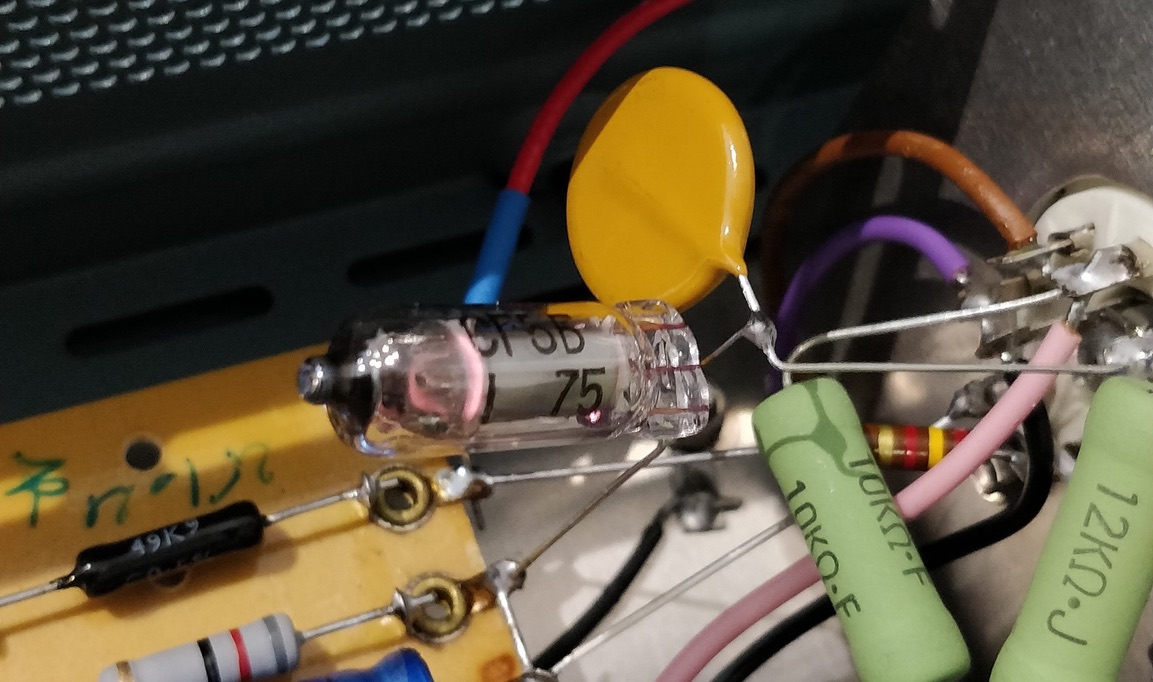The story begins with a FR1/Mk3 cartridge bought from a Japanese seller. This Ikeda San masterpiece brought me to heaven when I heard it for the first time many decades ago. At that time, the poor student I was couldn’t afford such a piece of art.
Years later, I didn’t forget the magic of those moments and decided to find one in decent shape if possible. I was lucky to find one, apparently in good condition, in Akihabara and received a small packet a week later. Despite a worn box due to long-term storage, the cart appears to be mint, not to say unused, with a perfect diamond and suspension
it didn’t take a long time to set it on my Garrard for a ride, fitted on a new Jelco headshell. What to say... music is gorgeous, like in my memory, and the FR1 is still one of the finest cartridges I ever listened to. But I was disappointed.
At the time I heard this cart for the first time, I did not pay attention to the output level. And God, it is very, very low (about half my Entré EC30). It seems to be the way air coil cartridges behave and the price to pay for naturalness and absolute transparency.
It is not a good fit for my C3g phono preamp, which is suddenly short in gain. There is no other choice than a new one dedicated to the FR cartridge. Immediate problem: which tube could give a higher gain while keeping all the C3g qualities? Kind of catch-22.
I spent weeks digging my books and searching the web to finally exhume a totally obscure (at least to me) tube that appears to be the perfect contender in such a project, the British STC 5A/180M beam tetrode. Sourcing a complete datasheet was a nightmare. But it was worth trying.
With a max Gm of 32 mA/V and an internal resistance as low as 25K, it is a dream for a very high gain, full bandwidth, and low noise stage. Much better than a D3a with such a low Rp and on par with an E55L, but at one-third the current.
I was half my way. I found the good specs, now I had to find the tube. After a while, I sourced a supplier in Great Britain and bought a little batch at the correct price. The rest of the story is math and parts. The design is very similar to the C3g phono. Two stages, including the shared current setup I use in preamps as well as a driver in amplifiers. A setup that brought excellent results each time I implemented it.
To meet Lipschitz RIAA recommendations while keeping gain high with reasonable heat dissipation, the tetrode load is calculated accurately. This load is of prime importance to determine the output impedance that will determine the RIAA network component values.
A problem occurred with the grid current, as the datasheet does not provide any information about it. To overcome this, I used the same trick as for the alternate driver tested for the E88C LCR phono preamp. A VR tube is used in conjunction with a resistor to set G2 voltage. This resistor Rx is calculated to pass a determined current that will split between regulator and grid.
For this purpose, I bought for cheap a few Russian SG5B, tiny little 150V glow discharge tubes.
The current through G2 is really stable as long as the voltage remains constant. This is mandatory with very high-slope tubes where any voltage change induces a great gain variation. One could object some noise due to gas ionization, but it is far less than a Zener and easily reduced using a small capacitor in parallel. Anyway, it’s the counterpart for great dynamic, stable and wide soundstage. It is rarely annoying, the signal being way above VR tube noise. I personally hear nothing on my 105 dB speakers.
To determine the best load, I made simulations from 7.5 to 15K and finally stopped at 10K. It sets gain at 200/220 under 10 mA anode current (180V anode voltage, 150V G2 voltage). At that point internal resistance is about 30K and Zout close to 7,2K. Rx is calculated to draw about 10 mA through G2 and VR. Means 13k with a HV supply at 280V. The closest standard value is 12K. The Rk total current will be close to 20 mA, and for VG -1,7 V, its value is 85 ohms.
The second-stage tube is chosen to meet 55 dB of overall gain. A double triode with a mu of 30/35 will do the job. The first idea was the world-famous E80CC, but the gain was too low. This put me in the E180CC family of tubes, but after long listening tests, I found these tubes too clinical-sounding (Amperex 7062), not to say unpleasant (Sylvania 6414). Even the highly prized 12AY7/6072 did not satisfy me. A solution came with another British valve, the 13D3. This nice STC Brimar double triode intended for audio applications has a clear, detailed, and mild voice that blends well with the 5A/180M.
With its medium mu, the gain is close to 24 (47K load) for an overall one of 530, or 54,5 dB. Perfect.
Zout is about 430 ohms, low enough to permit long interconnect cables if necessary.
STC Brimar 13D3/CV2212, Electronic Enterprises distributor
A few pics
More to come...










